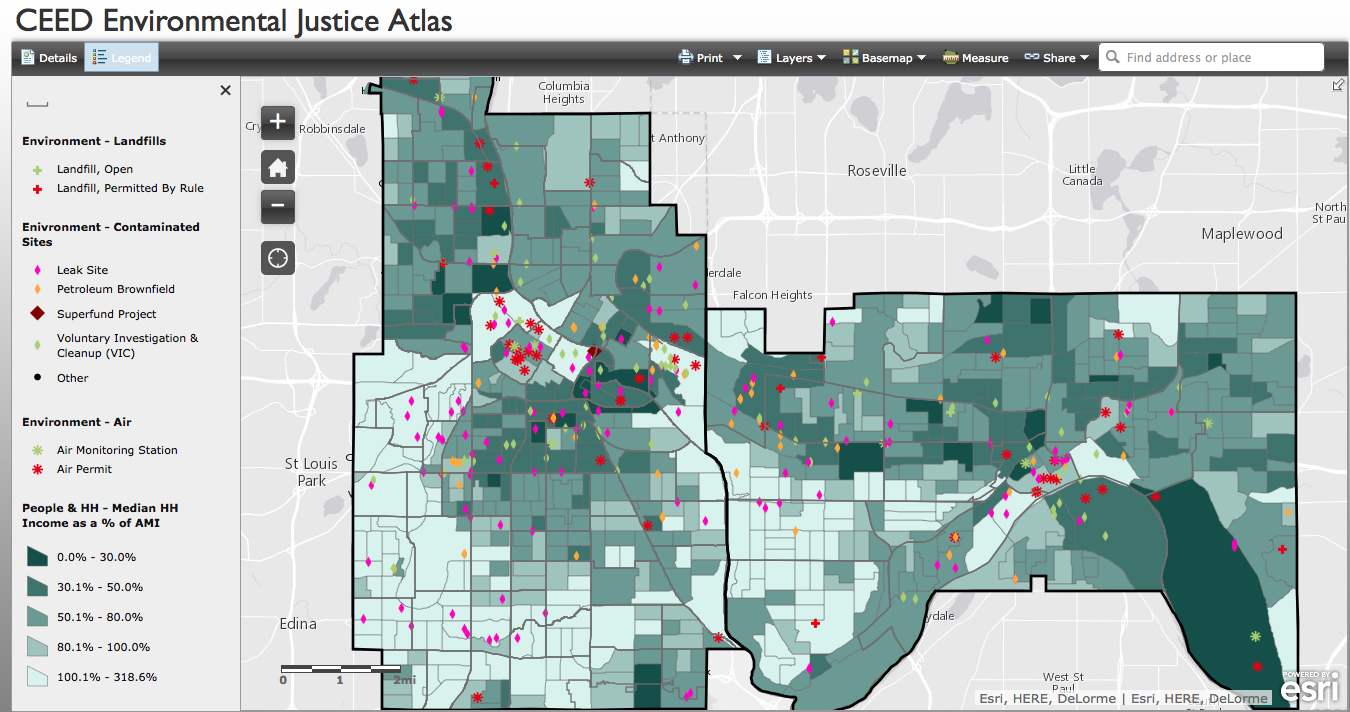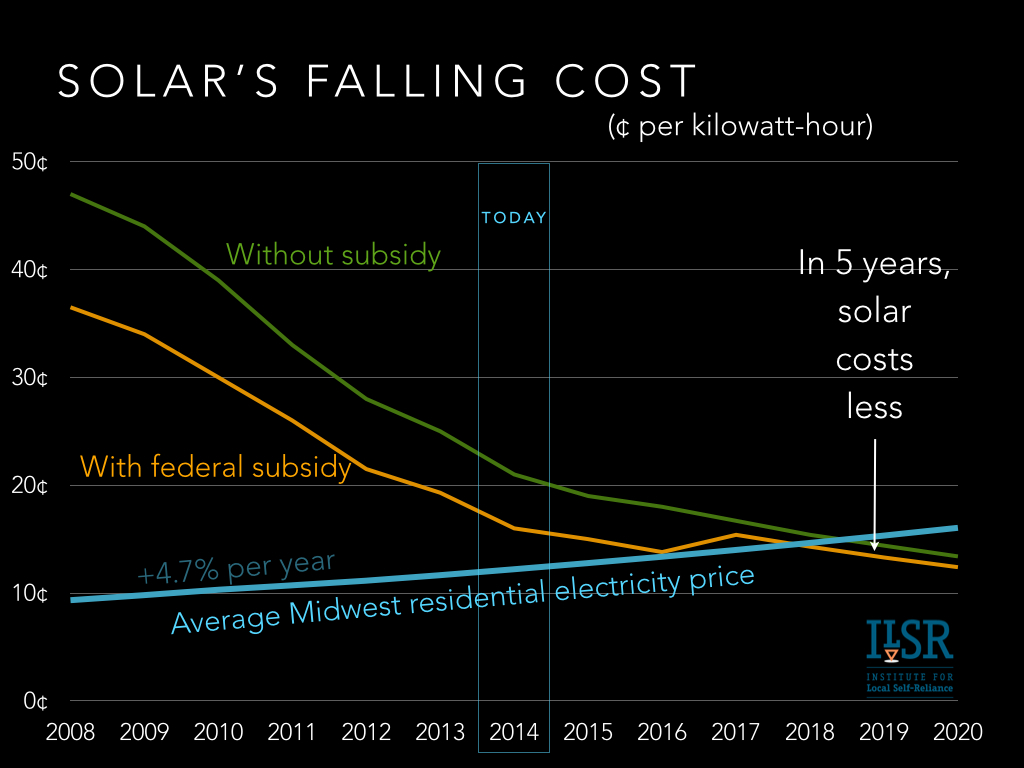Solar = Energy Equity Solution
Originally published on ilsr.org.
For over 100 years, the American economy has been fueled by enormous expansion of fossil fuel energy. It has emitted a disproportionate share of its environmental impact (too much) and economic rewards (too few) on those less fortunate.
More than any 21st century energy source, solar can power an equitable and environmentally sound energy future. Solar can mean reversing decades of environmental injustice.
Consider the results of the 20th century model of centralized control and generation of energy:
- Sixty-eight percent of African Americans live within 30 miles of a coal plant, as opposed to 56 percent of whites (source)
- 71% of African Americans live in counties that violate federal air pollution standards, compared to 58% of the white population (source)
- The median per capita income in counties with coal power plant is 15% lower than for the overall U.S. (source)
- The 8.1 million Americans who live within 3 miles of coal power plant have a per capita income 15% lower and are 25% more likely to be people of color (source)
The following map provides a full color illustration of the data. In the twin cities of Minneapolis and St. Paul (MN), air emissions and hazardous sites are disproportionately in communities with below median incomes.
A Solar Solution?
Solar can help reverse the injustice of the 20th century energy system in two ways: by reversing the flow of energy dollars back into disadvantaged communities and to reverse the environmental harm by offering zero-emission electricity generation. Not only does solar represent clean, local energy, but every local solar array will reduce the demand for importing dirty energy from power plants that disproportionately spew their emissions on low-income folks and people of color.
Solar is a technology uniquely suited to this task because it is inherently decentralized, mass produced, and installed in small pieces that can add up to big amounts of energy. And it’s already becoming cost-effective enough to work for the communities that can benefit the most.
The following chart gives the big picture on solar costs with the most conservative example: solar energy in the Midwest – a modest solar resource and very low electricity prices. Within five years, solar (with or without subsidies) will provide cheaper power to electric consumers than their utility.
Even by 2020, however, the upfront cost of a solar array will still approach $10,000 for a typical home. Fortunately, two key strategies are already in play to smooth access to low-cost solar energy.
Financing
There are several options for reducing the upfront cost of solar energy for low-income people. One, for those that own their home, is solar leasing. A solar lease can offer access to solar to those (with a good credit rating) that can’t afford solar’s upfront cost. But the cost of a lease is the middleman, where much of the profit goes.
Another strategy is PACE – Property Assessed Clean Energy – programs that allow property owners to pay for solar via their property bill. As long as the home has some equity and the homeowner a good history of property tax payment, PACE programs offer low-interest financing that is tied to the property. While the Federal Housing Finance Agency sharply curtailed residential PACE programs several years ago, California and other states are identifying ways to re-open the local finance spigot.
There are several other programs that have had some limited success. The Northeast Denver Housing Center integrated solar on several affordable housing units in a recent development. California’s Solar Initiative program offered substantial incentives for cutting the upfront cost of solar for single-family and multi-family dwellings, and has served approximately 1,000 households. Community Power Network and its partner organizations have also scoped out a variety of financing options and models.
Community Solar
The best strategy for solar access may be community solar, a solar array co-owed by multiple households that don’t need to own property. In November 2010, ILSR’s Community Solar Power report analyzed most of the existing community solar projects to assess which models had the best potential to replicate. Since then, community solar laws have been enacted in states from Colorado to Minnesota, with a total of 11 states allowing “virtual net metering” for electric customers to share the output from a shared solar array. Colorado’s law includes a set-aside for low-income participants.
SharedRenewables.org maps (or used to) both the status of state policy supporting community solar and the completed community solar projects, the Renewable Northwest Project maps projects in that region of the country, and the Solar Gardens Institute has several more resources.
As enacted in most locations, community solar allows participants to buy shares of as little as a 1/2 a panel (100 watts) for $300-400. The electricity generated from that panel is credited back to the customer’s electric bill. It requires no credit check. Even in places with relatively low electricity prices, the panel will recoup $15 per year or more. And prices continue to fall rapidly.
The history of energy is one of haves and have nots, but the advent of cost-effective, widely distributed solar is an opportunity to reverse course and put the power and money in the hands of anyone.
This article originally posted at ilsr.org. For timely updates, follow John Farrell on Twitter or get the Democratic Energy weekly update.
Photo Credit: Black Rock Solar
Have a tip for CleanTechnica? Want to advertise? Want to suggest a guest for our CleanTech Talk podcast? Contact us here.
Latest CleanTechnica.TV Video

CleanTechnica uses affiliate links. See our policy here.


